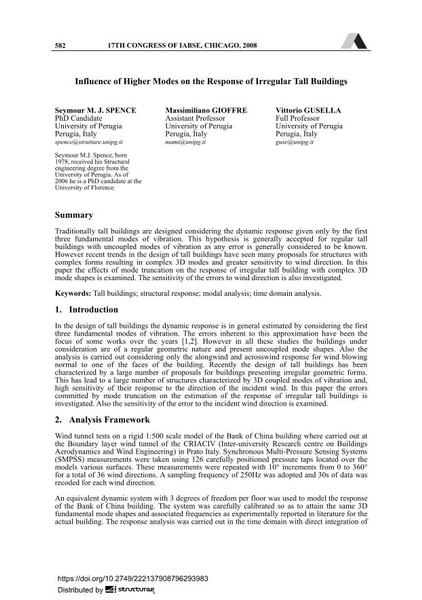Influence of Higher Modes on the Response of Irregular Tall Buildings

|
|
|||||||||||
Bibliographic Details
| Author(s): |
Seymour Milton John Spence
Massimiliano Gioffre Vittorio Gusella |
||||
|---|---|---|---|---|---|
| Medium: | conference paper | ||||
| Language(s): | English | ||||
| Conference: | 17th IABSE Congress: Creating and Renewing Urban Structures – Tall Buildings, Bridges and Infrastructure, Chicago, USA, 17-19 September 2008 | ||||
| Published in: | IABSE Congress Chicago 2008 | ||||
|
|||||
| Page(s): | 582-583 | ||||
| Total no. of pages: | 8 | ||||
| Year: | 2008 | ||||
| DOI: | 10.2749/222137908796293983 | ||||
| Abstract: |
Traditionally tall buildings are designed considering the dynamic response given only by the first three fundamental modes of vibration. This hypothesis is generally accepted for tall buildings of regular geometric profile and uncoupled modes of vibration as any error committed is generally considered to be known and acceptable. However recent trends in the design of tall buildings have seen many proposals for structures with complex forms resulting in complex 3D modes and greater sensitivity to wind direction. In this paper the effects of mode truncation on various response quantities such as top floor translational and angular accelerations, base bending moment and torque is investigated for an irregular tall building having complex 3D mode shapes. The sensitivity of the errors to wind direction is also examined. |
||||
| Keywords: |
modal analysis tall buildings structural response time domain analysis
|
||||
